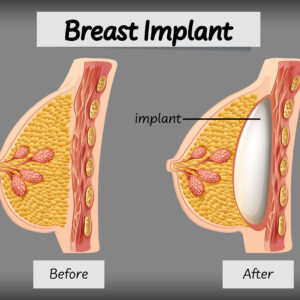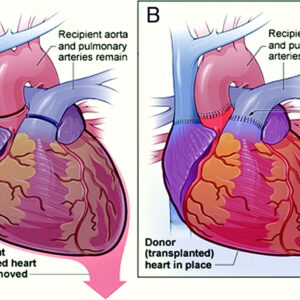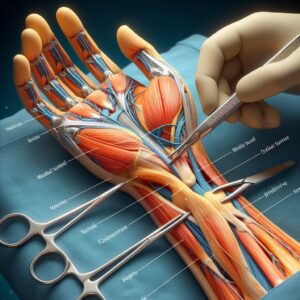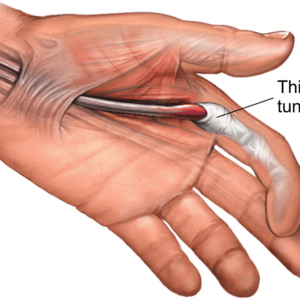Description
Familiarity with treatment
Microneedling is a cosmetic procedure that involves pricking the skin with tiny sterilized needles to create controlled micro-injuries. The procedure stimulates the body’s natural healing response, leading to increased collagen and elastin production, which can improve the appearance of the skin. Some key points about microneedling based on the search results include:
- Microneedling is also known as collagen induction therapy and is used to address various skin concerns such as acne, hair loss (alopecia), dark spots or patches on the skin (hyperpigmentation), large pores, reduced skin elasticity, scars, stretch marks, sun damage, and fine lines and wrinkles.
- The procedure is minimally invasive and can be performed by trained professionals using handheld devices like derma rollers or microneedling pens.
- Microneedling is considered suitable for people with darker skin tones because it doesn’t carry the risk of skin discoloration associated with some other facial rejuvenation procedures that use heat, light, or lasers.
- The micro-injuries created by the needles during microneedling stimulate the production of collagen and elastin, which are essential for maintaining the skin’s firmness, elasticity, and youthful appearance.
- Multiple microneedling treatments are usually required, typically spaced 3 to 8 weeks apart. It can take 3 to 6 months to see noticeable results, and maintenance treatments may be needed once a year.
- Microneedling can be combined with topical treatments like hyaluronic acid, vitamin C serums, or platelet-rich plasma (PRP) to enhance results.
- The recovery time after microneedling can vary, but mild redness, swelling, and sensitivity are common and typically subside within a few days.
- It is important to consult with a licensed skincare professional or dermatologist to determine if you are a suitable candidate for microneedling and to discuss your specific skin concerns and goals.
Who is it suitable for?
Microneedling is generally considered suitable for most people who are in overall good health. It can be used to address various skin concerns such as acne, scars, dark spots, wrinkles, large pores, reduced skin elasticity, stretch marks, and sun damage. However, there are certain factors to consider. Based on the search results:
- Microneedling is considered safe for most people who are in overall good health.
- It may not be safe for people who use certain acne medications, those with active acne, or those with moderate to severe psoriasis or eczema.
- Microneedling is generally not recommended for people who take or have had radiation in the past year, are pregnant, have a skin disease, or have a history of scarring or poor wound healing.
Who is it not suitable for?
Microneedling may not be suitable for everyone. While it is generally considered safe for most people, there are certain situations where microneedling may not be recommended. Based on the search results, here are some factors to consider:
Active Skin Infections or Inflammatory Skin Conditions: If you have an active skin infection, such as herpes or impetigo, or inflammatory skin conditions like active acne, eczema, or psoriasis, microneedling may not be suitable. The procedure could potentially worsen these conditions or spread the infection.
Keloid or Hypertrophic Scarring: Individuals with a history of keloid or hypertrophic scarring, which are types of raised and thickened scars, may not be suitable for microneedling. The procedure could potentially trigger further scarring in these individuals.
Uncontrolled Diabetes or Blood Disorders: Microneedling involves creating controlled micro-injuries in the skin, which requires the body’s natural healing response. If you have uncontrolled diabetes or blood disorders that affect clotting, microneedling may not be recommended as it could interfere with the healing process.
Pregnancy: Microneedling is generally not recommended for pregnant individuals due to the potential risks involved. It’s always best to consult with a healthcare professional to determine the safety of any cosmetic procedure during pregnancy.
Recent Use of Certain Medications: Some medications, such as isotretinoin (Accutane) or other acne medications, can affect skin healing and may increase the risk of adverse reactions to microneedling. It’s important to disclose any medications you are currently taking during your consultation.
History of Skin Cancer or Radiation Therapy: If you have a history of skin cancer or have undergone radiation therapy in the past year, microneedling may not be suitable. It’s important to discuss your medical history with a healthcare professional.
Advantages
Microneedling offers several advantages for the skin. Here are some benefits based on the search results:
Improvement of Skin Texture and Tone: Microneedling stimulates collagen and elastin production, which can improve the overall texture and tone of the skin. It can help reduce the appearance of fine lines, wrinkles, and acne scars 1.
Enhanced Absorption of Topical Products: The micro-injuries created by microneedling allow for better absorption of topical skincare products. This can enhance the effectiveness of serums, moisturizers, and other treatments applied to the skin 2.
Reduction of Hyperpigmentation: Microneedling, especially when combined with vitamin C serum, has been shown to help balance melanin levels and improve hyperpigmentation. It can be a preferred treatment over laser options for individuals with darker skin tones 3.
Minimized Appearance of Scars: Microneedling can help reduce the appearance of various types of scars, including acne scars and surgical scars. It stimulates collagen production, which can help smooth out the skin and improve its texture 4.
Increased Skin Firmness and Elasticity: By promoting collagen and elastin production, microneedling can improve the firmness and elasticity of the skin. This can result in a more youthful and rejuvenated appearance 5.
Reduced Wrinkles and Fine Lines: Microneedling can help diminish the appearance of wrinkles and fine lines by stimulating collagen production and improving skin elasticity 4.
Minimal Downtime: Compared to more invasive procedures like laser treatments or intensive peels, microneedling typically has a shorter recovery time. The downtime is generally 24-72 hours, and the skin can have a glowing complexion during this period 2.
Complications
Microneedling, when performed by trained professionals, is generally considered a safe procedure. However, like any cosmetic procedure, there are potential complications and risks to be aware of. Here are some points based on the search results:
Skin Irritation and Redness: After microneedling, it is common to experience mild skin irritation, redness, and sensitivity. These effects are usually temporary and subside within a few days.
Risk of Infection: If proper sterilization and hygiene protocols are not followed, there is a risk of infection. It is crucial to ensure that the microneedling devices and the treatment area are properly cleaned and disinfected.
Skin Discoloration: In rare cases, microneedling can cause temporary or permanent changes in skin pigmentation. This risk is higher for individuals with darker skin tones.
Allergic Reactions: Some individuals may experience allergic reactions to the topical products used during or after microneedling. It is important to inform the skincare professional about any known allergies or sensitivities.
Skin Sensitivity and Dryness: Microneedling can temporarily increase skin sensitivity and dryness. It is essential to follow post-treatment instructions provided by the skincare professional to minimize these effects.
Bruising and Swelling: Mild bruising and swelling may occur after microneedling, particularly in sensitive areas. These effects are usually temporary and resolve on their own.
Unsatisfactory Results: While microneedling can provide significant improvements in the appearance of the skin, individual results may vary. It is important to have realistic expectations and understand that multiple sessions may be needed to achieve desired outcomes.
Previous care
- Avoid using topical agents that may increase skin sensitivity, such as retinoids, exfoliants, topical antibiotics, or acids, for 5-7 days prior to the treatment 1.
- Discontinue the use of Accutane for at least six months before starting microneedling sessions 1.
- Avoid taking anti-inflammatory medications like ibuprofen, Motrin, or Advil for at least three days before the microneedling session, as they can interfere with the natural inflammatory process necessary for skin rejuvenation 1.
Aftercare
- Keep the treated area clean and avoid touching it unnecessarily to minimize the risk of infection 2.
- Apply a gentle, non-irritating moisturizer to keep the skin hydrated and promote healing 2.
- Avoid direct sun exposure and use a broad-spectrum sunscreen with SPF 30 or higher to protect the treated skin from UV damage 3.
- Expect redness and swelling immediately after the procedure, which can last up to 48 hours 2.
- Avoid using skincare products containing retinol, vitamin C, AHAs, or BHAs immediately after microneedling, as they may irritate the skin 3.
- Follow any specific aftercare instructions provided by your skincare professional or dermatologist.






Reviews
There are no reviews yet.